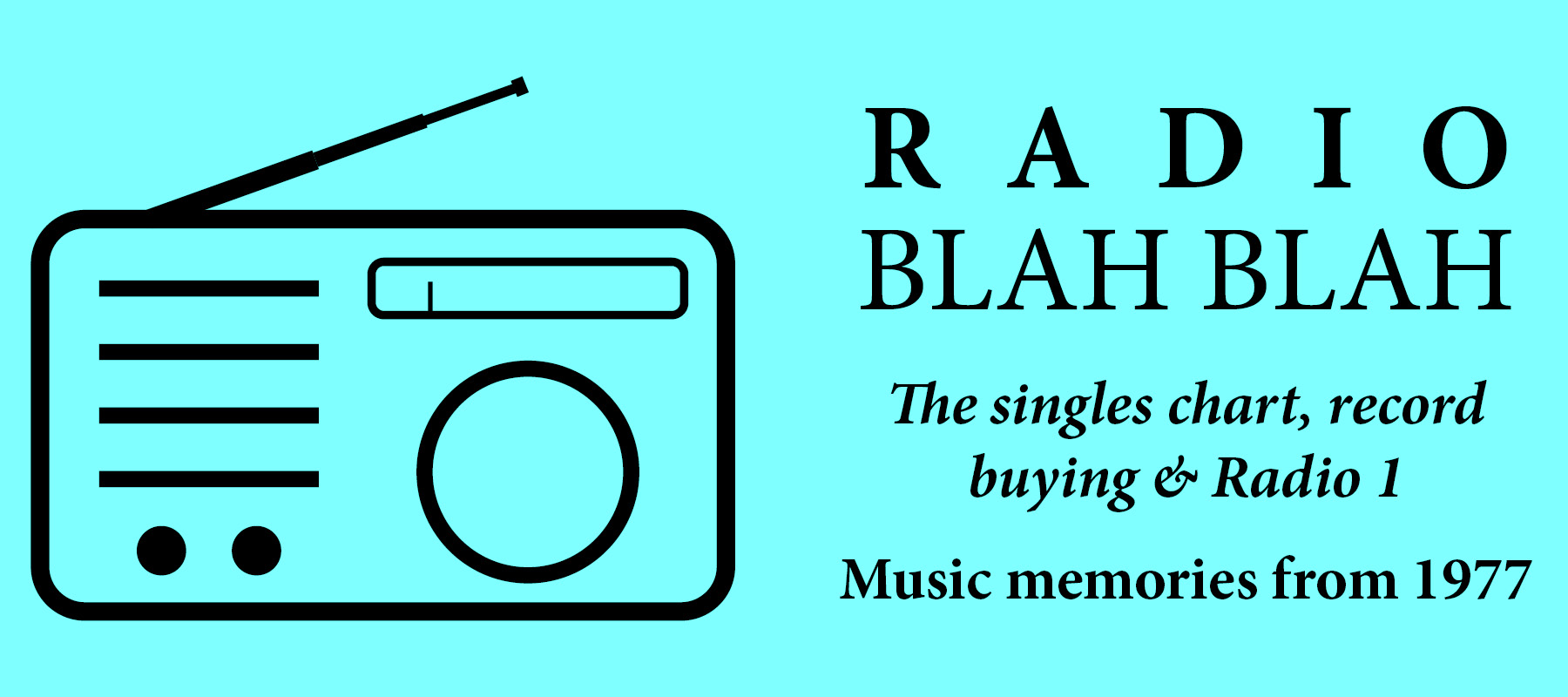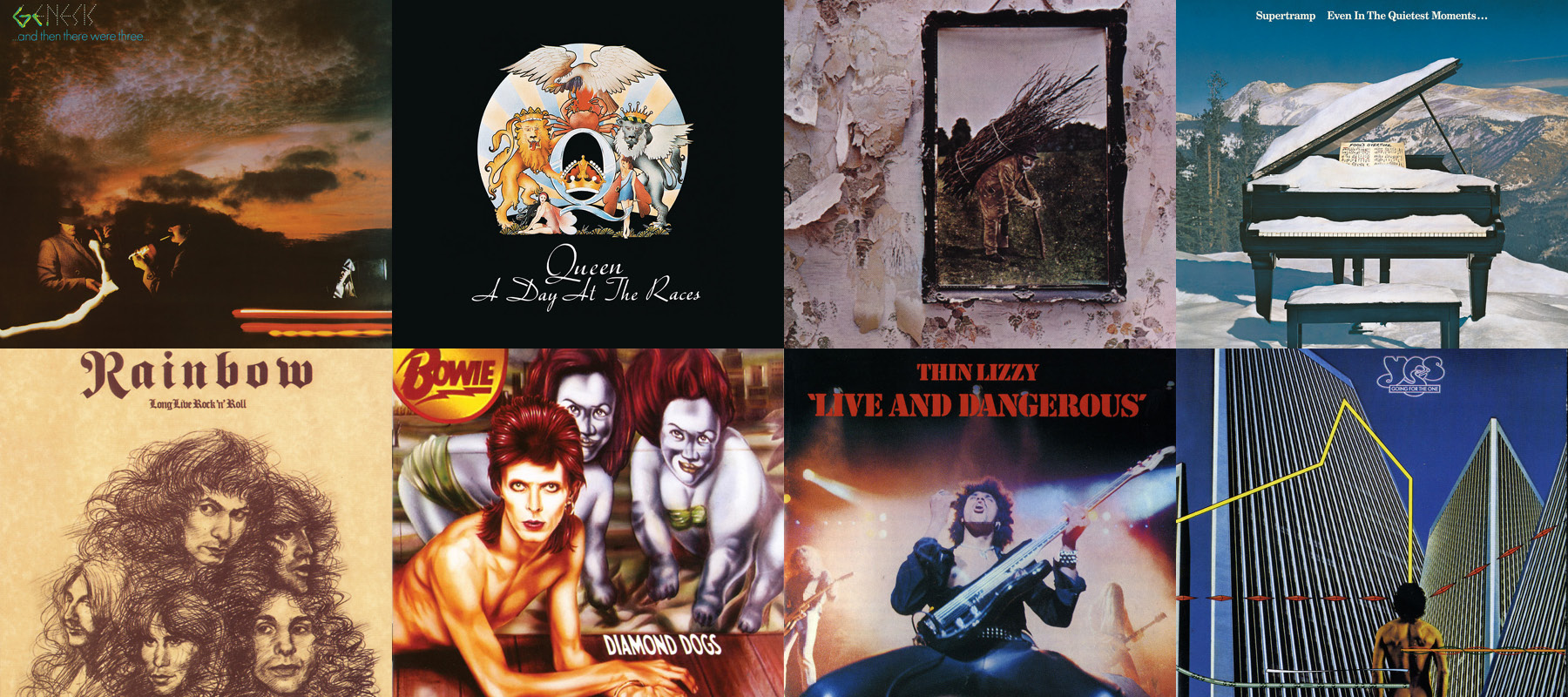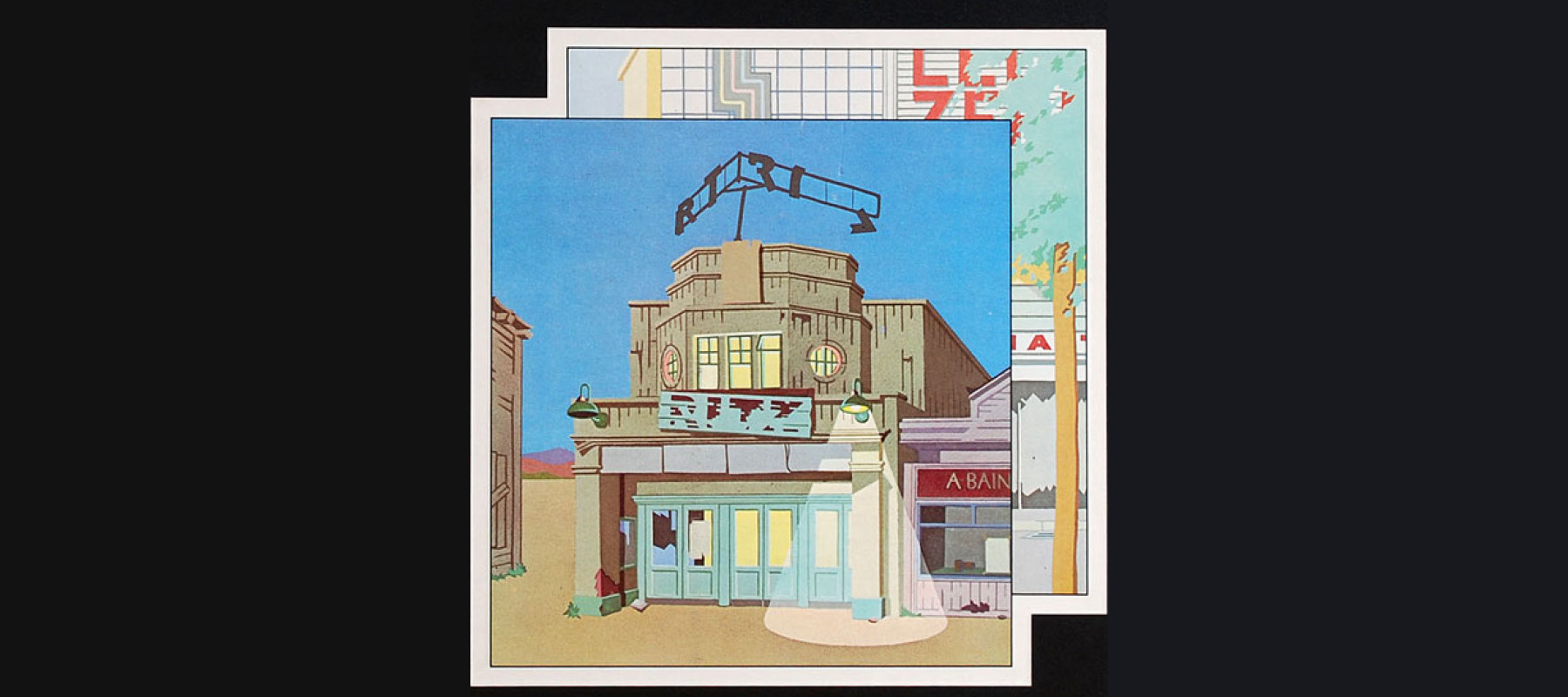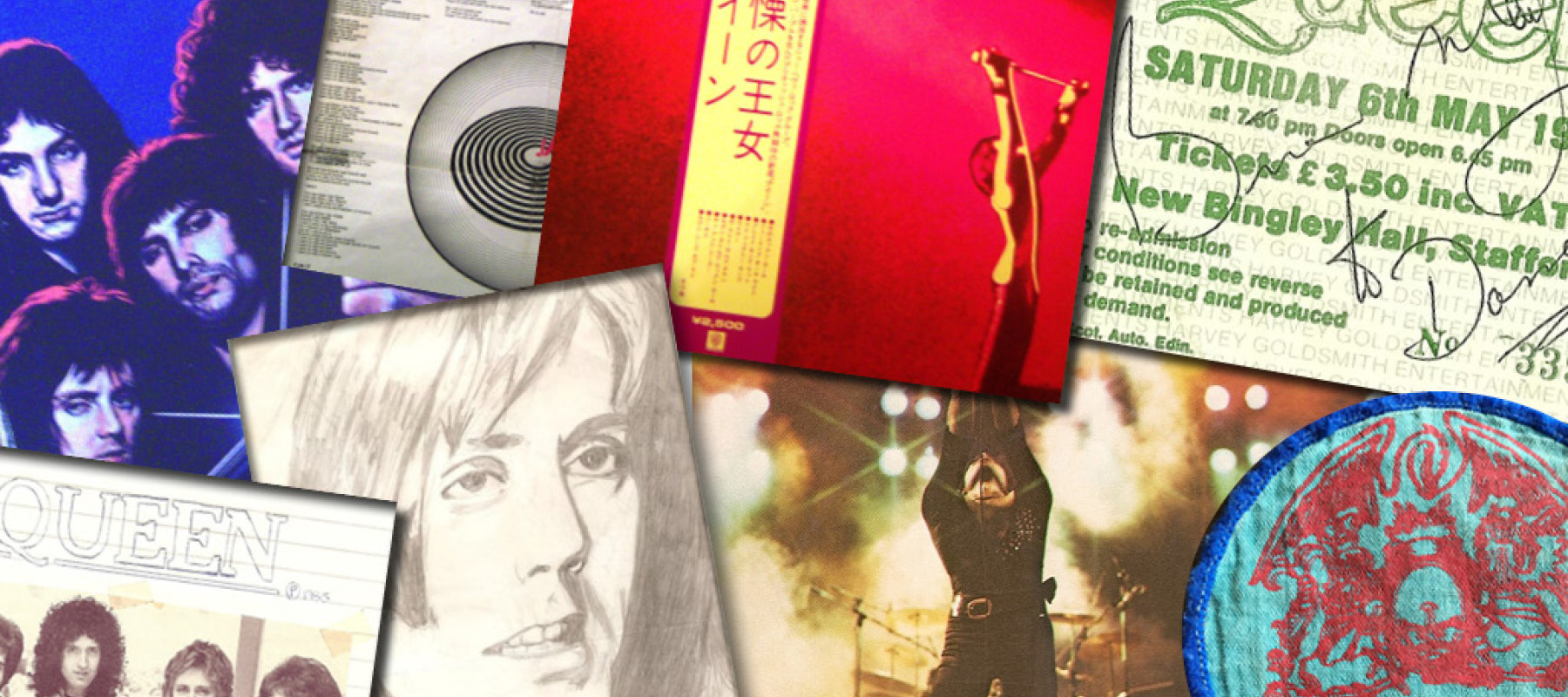Radio Blah Blah: Records and Record Buying in 1977

Giving away my record collection about ten years ago — all bar a couple of rarities — was an easy decision to make. Vinyl might once again (in 2020) be the cool way to listen to music, but not a decade ago, a time when record shops were an endangered species. Besides, there is no turntable in the house to play them on and I have CDs of everything I used to own, many with remastered sound and/or additional tracks.
Dusting off the old vinyl in the loft to help me compile a list of the first records I ever bought is not, therefore, an option. The official charts website will instead be my trusty guide through the gathering gloom of failing memory.
This ought to be easier with singles than with albums. Record shops used to stock albums going back years, but singles carried more of a ‘sell by’ date. Most shops sold older singles as well, usually in tightly packed, randomly ordered rows — and no doubt I picked up one or two singles cheaply long after they had fallen out of the charts — but I am fairly confident that I bought everything mentioned below when it was actually in the charts, making it possible to establish a more or less accurate timeline.
First, some pre-history.
My parents were not pop-music people. The only pop records I recall in the house when I was young were a couple of early Beatles EPs and Teenage Rampage by The Sweet (still my favourite Sweet song). That dates the memory to about 1974. Later there was a copy of Queen’s Bohemian Rhapsody, presumably bought by my brother, who is older than me. The less said about my impromptu science experiment — playing the b-side using a nail as a stylus — the better. Hint: It is a one-time experiment.
I was too young to watch Van der Valk on television (early 1970s, with Barry Foster as the title character) but was obsessed with the theme tune, played by the Simon Park Orchestra. Eye Level reached No 1 in 1973. There was also a version with words sung by Matt Munro called And You Smiled. We had an album of popular TV themes as well. Favourites of mine, probably not on the album, included The World at War, Colditz and The Avengers.
I was a kid; there was inevitably a novelty single or two. One was a spoof song called King of the Cops, featuring somebody doing impressions of TV detectives to the tune of King of the Road by Roger Miller. The other was Trail of the Lonesome Pine by Laurel and Hardy, the beginning of a lifelong affection. I was gutted that it peaked at No 2, unaware that the song in its way was Bohemian Rhapsody. Over the years I have agonised every time a Queen single has stalled at No 2 — it is quite a list — so that probably counts as a bit of irony.
We bought our first music centre in about 1976: a radio, record player and cassette player, all in one. It meant that you could tape things directly from the radio or from a record, so the quality of the recording was good. I remember endlessly playing and re-playing a BASF C60 cassette with only four songs on it. One was definitely Mississippi by Pussycat and another was If You Leave Me Now by Chicago — so probably October or November 1976. The other two may have been Under the Moon of Love by Showaddywaddy and either Dancing Queen or Money Money Money by Abba. More about them shortly.
And so to January 1977. Jim Callaghan had taken over from Harold Wilson as Labour prime minister the previous April, Jimmy Carter was just beginning his term in office as US president, and the Christmas hit When a Child Is Born by Johnny Mathis was still No 1 in the first Top 30 of the new year.
I was 10 and beginning to soak up music like a sponge. This included obsessing about the singles chart, frantically scribbling down every song as it was read out on Radio 1 before writing the whole thing up neatly afterwards. I then taped all the new entries off the radio, using a mini-library of cassettes, with the DJ’s waffle over the intro and outro of each song lopped off. There were cassettes for repeat use and one reserved for songs I liked. Cassettes came with a small plastic square in the top corner; breaking it stopped you from accidentally taping over the contents.
There is a familiarity about the Top 30s of January 1977, so I must have been a regular listener by this point. A few songs are admittedly a complete blank — Bionic Santa by Chris Hill? — but it is surprisingly easy to remember the ones I hated. The chart of 23 January features Don’t Cry for Me Argentina by Julie Covington, When I Need You by Leo Sayer and David Soul singing Don’t Give Up On Us Baby. The entire universe watched Starsky and Hutch but it was obvious even to a 10-year-old that ‘Hutch’ wasn’t No 1 because of his singing voice.
The new chart was announced on Radio 1 on Tuesdays. Top of the Pops was on BBC One on Thursdays and there was a weekly chart show on the radio on Sundays — the Top 20 at first, later morphing into the Top 40. Knowing the exact order of songs to be played, this is where the taping mainly happened. Presented by Tom Browne back when I first started listening, it was a simultaneous broadcast on Radio 1 and Radio 2 — and in glorious stereo. Radio 1 itself was only in mono. As the reception, particularly after dark, was awful, it made recording anything from it a waste of time.
The chart of 30 January features a couple of 7-out-of-10 songs by groups I now listen to a lot: Don’t Believe a Word (Thin Lizzy) and New Kid in Town (the Eagles). But only one song grabbed me at the time: More Than a Feeling by Boston. It remains a huge favourite, a definite maybe for my yet-to-be-written list of the 20 best songs by 20 different artists (there are about 50 songs on that particular shortlist). I didn’t buy it, but the song later featured on a fairly obscure film soundtrack album that I got sometime in 1978 called FM.
And so we get to 6 February 1977.
Boogie Nights (Heatwave), Don’t Leave Me This Way (Harold Melvin and the Bluenotes) and Chanson d’Amour (Manhattan Transfer) have joined Leo Sayer, Julie Covington and David Soul at the top end of the charts. But new in at No 30 is Rockaria by ELO — I think, my first ‘proper’ single.
I picked up a great-value box set of the entire ELO catalogue on CD not long ago. Their first few albums, in particular — featuring Roy Wood as much as Jeff Lynne — are excellent and unexpectedly ‘proggy’ and experimental in places. A New World Record was their big commercial breakthrough; Rockaria was one of several singles from it. Beyond the reference to Beethoven, the lyrics seemed like gobbledygook. I probably liked the song for the ‘novelty’ operatic voice and the feel-good, upbeat tempo.
A month or so later and Knowing Me Knowing You is dominating the charts. It is blindingly obvious to me now that Abba were exceptional — classic pop tunes, brilliant arrangements and surprisingly dark lyrics — but I detested them at the time. David Bowie’s Sound and Vision is also in the top 3. Apart from the catchy riff, I liked its unusual structure: a short piece anyway, the vocals only come in halfway through. This was the start of Bowie’s Berlin period when he did some of his most influential work, though it didn’t sell particularly well by his standards. Sound and Vision was his last really big hit until Ashes to Ashes in 1980. Even Heroes, released later in 1977, was not much of a commercial success.
Once I was buying albums, most Saturdays involved touring the record shops of Wigan, principally Javelin and Roy Hurst’s, who in an act of wanton vandalism routinely stamped their name and address in ink on inner sleeves. But on this particular occasion in April I walked down to Mr Records, a local shop on the main road in Pemberton — long gone now, of course (the shop, not Pemberton) — intending to buy another single. Have I the Right by the Dead End Kids, No 6 on 24 April, was top of the shortlist, though 10cc, the Eagles and Peter Gabriel all had records out as well. Solsbury Hill was Gabriel’s first solo single after leaving Genesis. It is still one of my favourites; even as a 10-year-old I must have liked it.
Sad to say, I didn’t choose any of them. Instead — idiot alert — I bought the latest Top of the Pops album. The vinyl equivalent of the Turkey Twizzler, Top of the Pops albums were cheap and full of shit. Singles probably cost about 90p, albums perhaps £3.50. My weekly pocket money was 50p, let’s say, so I could afford a record every few weeks. A Top of the Pops album featured a dozen or so current hits — the Now! of its day — at a bargain price of about £1.20. Cheap but, alas, not cheerful. None of the tracks were original versions; they were all played (badly, if memory serves) by an in-house band. The one and only attractive thing about a Top of the Pops album was the model on the cover.
No such schoolboy error a week or two later, buying what was probably single number two: Hotel California by the Eagles. Like Rockaria, it is unusual and distinctive — six minutes plus, with a lengthy introduction and, of course, perhaps the greatest twin-guitars solo of all time. Definitely a thing for guitars, then. In our first music lesson at my new school in September we were asked what instrument we would like to learn; I wrote ‘electronic guitar’. Songs with offbeat arrangements seem to be high on my list, too — soon after buying Hotel California, I got 10cc’s Good Morning Judge, a clever, quirky song by a clever, quirky group.
Another stone-cold classic (unknown to me) in this week’s chart is Smoke on the Water by Deep Purple. Also up there is the ultimate earworm, Mah-Na, Mah-Na by the Muppets, and a fantastic but only moderately successful song called Lonely Boy by Andrew Gold that often gets a mention on Ken Bruce’s Pop Master quiz.
The charts tended to behave in a fairly predictable way: perhaps five or six new entries on the Top 30, with the highest new entry and the highest climber always getting a special mention. Going Underground by the Jam was the first single I remember actually entering the chart at No 1, a few years later. It is the most uneven double A-sided single I know: Going Underground is one of the Jam’s best songs and Dreams of Children one of their worst.
The highest new entry of 29 May is God Save the Queen by the Sex Pistols, in at No 11. Listening to the Sunday chart rundown I wait, fingers poised above ‘Record’ and ‘Play’.
“In at No 11, the highest new entry this week is God Save the Queen by the Sex Pistols … and at No 10 is OK by the Rock Follies …”
They didn’t play it. They didn’t play God Save the Queen. ‘Why not?’ was what I wanted an answer to. What did I know of BBC bans and names like Johnny Rotten and Sid Vicious. Lyrics like “fascist regime” were yet more gobbledygook. By the following week it was No 2, just beaten to No 1 by Rod Stewart. Again it wasn’t played. It is often said, of course, that God Save the Queen was actually the ‘real’ No 1, but that this was deemed unacceptable in the week of the Queen’s Silver Jubilee by the bowler-hatted powers-that-be.
Speaking of Her Majesty, at some point in the first half of the year two friends at school — Keith and Andy — mentioned the names Freddie Mercury and Queen. Somebody to Love was already on one of my cassettes, ending with the final note of the piano and DJ Tom Browne saying “Ha! Qu–” before I pressed the Stop button. I wasn’t even aware of their next single, Tie Your Mother Down, which didn’t trouble the scorers — a shame, as it’s their best ‘live’ video.
Good Old-Fashioned Lover Boy — actually ‘Queen’s First EP’ — was their next single. It may have been my next buy, though possibly one I bought some time later. DJs spoke of records ‘climbing’ the charts and then ‘peaking’ and ‘dropping’. Good Old-Fashioned Lover Boy was one of those that actually yo-yo-ed around: 36 … 29 … 21 … 24 … 19 … 17 … 23 … 22.
It is a puzzle why I bought nothing during the summer holidays because there were some great songs around between June and August — Telephone Line (ELO), Match of the Day (Genesis), Fanfare for the Common Man (ELP), Oxygene (Jean-Michel Jarre), Dancin’ in the Moonlight (Thin Lizzy).
A big summer hit was the groundbreaking I Feel Love by Donna Summer, with its Giorgio Moroder electronic pulse: it is yet another song that I loathed at the time but grudgingly appreciate nowadays. Meanwhile, Elvis Presley died in the middle of August. His single Way Down had failed to even reach the Top 40 but suddenly raced to the top of the chart when his death was announced. Much the same thing happened after the murder of John Lennon in December 1980. His then-new album Double Fantasy was No 1, as were the singles Woman and (Just Like) Starting Over — collectively his biggest hits since the Imagine single and album a decade earlier.
I bought We Are the Champions as soon as it came out in early October. Maybe all my money was going on buying Queen albums because my next single only entered the Top 30 several weeks later: She’s Not There by Santana. It’s a great song (an old Zombies hit) but it was definitely the spectacular and (for a single) lengthy guitar solos that caught my ear. That guitar thing again; not that I had any idea who Carlos Santana was.
In contrast, it was the synth solo that stood out on my next buy, another old song, though a re-release not a cover: Virginia Plain by Roxy Music. The second coming of Roxy Music in the late 1970s was not to my taste — too suave, too smooth — but Virginia Plain is from their earlier art-house period when Brian Eno was in the band. Whenever Eno later collaborated with musicians I listen to, he always added a magical ingredient, something deliciously quirky and offbeat: try The Waiting Room by Genesis or Memories Can’t Wait by Talking Heads (with that brilliantly jarring and discordant middle eight at roughly 2:01, before it all comes back in tune with the line “Everything is very quiet…”).
The chart of 6 November sticks in the memory. We Are the Champions was on its way to becoming a big hit, getting to No 6 the previous week. There was every expectation that it would be top 3 this week. Radio 1’s Paul Burnett always announced the new chart at 12.45pm on Tuesdays, straight after Newsbeat. He played the new No 5 through to No 2 and then did the rundown of the full Top 30, finishing by playing whatever was No 1. This all happily coincided with school lunchtime. My friend and fellow Queen fan Keith lived in the road behind school. We sat in his porch with a transistor radio listening in. I didn’t expect Champions to be either No 5 or No 4. It wasn’t. Nor was it No 3. Great, it was No 2. Except it wasn’t.
A non-mover at No 6. Cue the end of the world.
Well, not quite. The following week it jumped again to No 2 and looked all set to be their second No 1, only for Abba’s Name of the Game to crush our hopes. For two weeks running the top 3 was Abba, Queen and Status Quo’s Rockin’ All Over the World. Then Paul McCartney and Wings were No 1 forever with the turgid Mull of Kintyre (actually, nine weeks — the same, coincidentally, as Bohemian Rhapsody first time around).
A television advert for an album, presumably broadcast in the run-up to Christmas, acclaimed the band in question as rock gods who routinely sold out stadiums in America. Impressive stuff. I was duly intrigued. They were Yes, and the album was Going for the One. I bought the single of the same name, actually their second hit from the album. The first was the exquisite Wonderous Stories, the spelling of which looks like something Americans would write. The song’s writer Jon Anderson is from Accrington, but he is a West Coast hippie through and through. The b-side of Going for the One was called Awaken PT 1, which I cheerfully pronounced ‘pee tee 1’. The penny didn’t drop until I bought the album a couple of years later that it was ‘Part 1’: the full version lasts about 15 minutes.
That, then, was my year that was. Plenty there that I still like and listen to, as well as much that passed me by at the time. It was the following year — 1978 — that I properly started to build up my album collection. Some of the early punk singles were already charting by the end of 1977, but the likes of Genesis, Pink Floyd and Led Zeppelin were on my horizon, and my brother was playing weird, heavy prog rock by a Canadian band with a singer who seemed to literally shriek about hallowed halls, temples of Syrinx and drinking the milk of paradise [my Rush appreciation here]. There was never really any doubt that it was rock music for me.
Mah-Na, Mah-Na.
I edited this blog in July 2022 when I published a companion piece, My first album buys.





